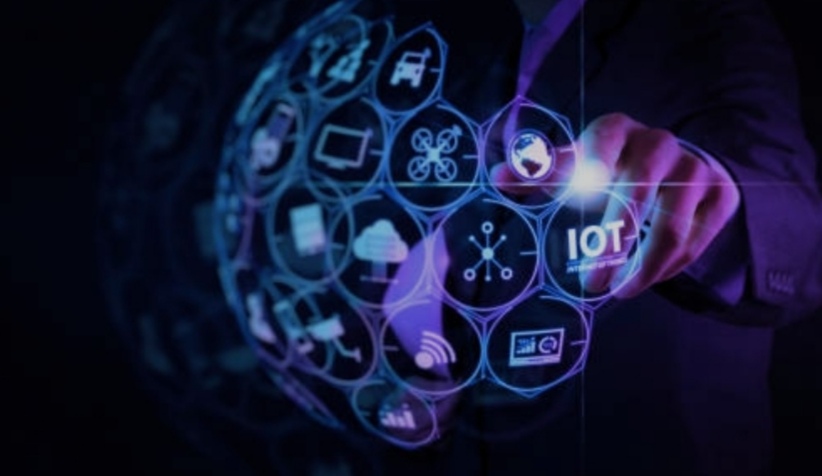What is the Internet of Things (IoT)?

Definition and Overview
The Internet of Things (IoT) is a revolutionary concept that refers to a vast interconnected network of physical objects, commonly known as “things,” that are embedded with sensors, software, and other technologies.
These objects can collect, process, and share data over the internet without requiring direct human intervention.
The primary goal of IoT is to enable seamless communication between devices, creating smarter environments that enhance convenience, productivity, and efficiency.
At its core, IoT bridges the gap between the physical and digital worlds by making everyday objects “smart.”
For example, a smart thermostat can learn your daily routines and adjust the temperature automatically, ensuring maximum comfort while saving energy.
Similarly, wearable devices like fitness trackers collect health-related data and sync with mobile apps to help users monitor their well-being.
The term “What is IoT” has become a hot topic due to the increasing adoption of smart devices in homes, industries, and cities.
IoT is transforming the way we live and work by making devices more intelligent, responsive, and interconnected.
From smart home systems to industrial machinery, IoT applications are virtually limitless, reshaping industries and enhancing quality of life.
Evolution and Growth of IoT
The journey of IoT began decades ago when the idea of connecting devices to a network was first envisioned.
Early precursors to IoT include radio-frequency identification (RFID) technology, which allowed for wireless data exchange between objects.
However, IoT as we know it today only became feasible with advancements in wireless communication, cloud computing, and miniaturized sensors.
- The Birth of IoT: The term “Internet of Things” was coined in 1999 by Kevin Ashton, a British technology pioneer. During this time, the idea was primarily limited to the potential of RFID tags in supply chain management.
- Technological Breakthroughs: Over the past two decades, the development of ubiquitous computing, low-cost sensors, and robust machine learning algorithms has fueled the rapid growth of IoT. The affordability of smart devices and the expansion of high-speed internet have further accelerated adoption.
- Key Milestones in IoT Growth:
- The introduction of IPv6 in 2012 made it possible to assign unique IP addresses to billions of connected devices.
- The rise of 5G technology has provided the ultra-fast connectivity required for real-time data processing in IoT systems.
- Advances in edge computing allow IoT devices to process data locally, reducing latency and improving efficiency.
Today, IoT is a multi-trillion-dollar industry, with applications ranging from healthcare and agriculture to smart cities and industrial automation. The number of IoT devices worldwide is expected to surpass 30 billion by 2030, highlighting the enormous potential of this technology.
Why IoT Matters:
IoT is not just about connecting devices—it’s about creating value through automation, data-driven insights, and enhanced decision-making.
For individuals, IoT offers convenience, energy savings, and improved security. For businesses, it drives innovation, streamlines operations, and reduces costs.
Governments are also leveraging IoT to build smart cities, improve traffic management, and optimize resource usage.
By understanding “What is IoT,” individuals and businesses can better prepare for a future where connectivity is the norm.
Whether it’s enabling a connected home or enhancing the efficiency of manufacturing processes, IoT is a game-changer that continues to evolve and shape the modern world.
How Does IoT Affect Your Home?
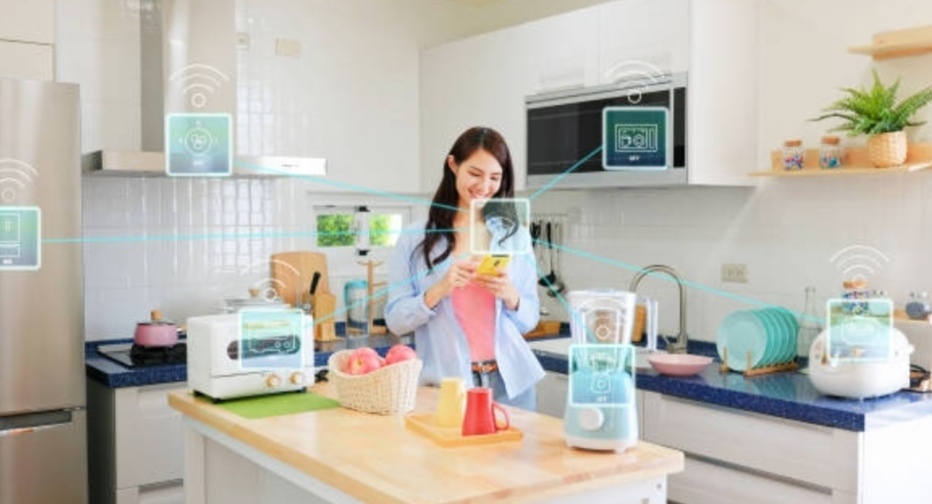
Introduction to Smart Homes
The Internet of Things (IoT) has revolutionized the concept of modern living by introducing the idea of smart homes.
A smart home is a connected ecosystem where various devices, appliances, and systems communicate with each other to simplify tasks, enhance convenience, and improve energy efficiency.
From controlling lighting and temperature to ensuring home security, IoT enables homeowners to manage their spaces effortlessly, often with just a few taps on a smartphone or through voice commands.
Imagine walking into a home where the lights turn on automatically, the thermostat adjusts to your preferred temperature, and your coffee machine starts brewing—all without lifting a finger.
This is the power of IoT in transforming homes into intelligent living spaces.
One of the most significant benefits of IoT in smart homes is its ability to learn and adapt to user preferences.
For instance, smart home systems can analyze your daily habits to provide personalized automation, such as turning off appliances when not in use or sending reminders when maintenance is due.
As more consumers ask “What is IoT” and explore its potential, the adoption of smart home technology continues to grow rapidly, making homes safer, more efficient, and more enjoyable to live in.
Key Applications of IoT in Homes
Home Automation Systems
Home automation is one of the most prominent applications of IoT, allowing users to control various systems such as lighting, heating, and cooling from anywhere in the world.
Smart home hubs like Amazon Alexa or Google Nest Hub act as centralized platforms that connect and manage these systems.
- Lighting Control: With IoT-powered lighting systems, you can automate lighting schedules or adjust brightness levels to create the perfect ambiance. Motion sensors can detect activity and turn lights on or off automatically, saving energy.
- Climate Control: IoT-enabled thermostats, such as Nest Thermostat, allow users to control heating and cooling remotely. These devices can learn your preferences over time, optimizing energy usage and reducing utility bills.
- Voice Control Integration: Integrating home automation systems with virtual assistants enables hands-free operation. Simply saying, “Turn on the lights” or “Set the thermostat to 72 degrees” simplifies daily routines.
Smart Appliances
IoT has transformed traditional household appliances into smart devices that offer unparalleled convenience and efficiency.
- Smart Refrigerators: These appliances can monitor their contents, track expiration dates, and even suggest recipes based on available ingredients. Some models allow users to order groceries directly from their fridge’s interface.
- Smart Ovens: IoT-enabled ovens, such as Samsung Smart Ovens, let you preheat, monitor, and control cooking settings remotely. You can even receive notifications when your food is ready.
- Washing Machines: Smart washing machines can send alerts when a cycle is complete or adjust settings based on the load’s weight and fabric type, ensuring optimal cleaning.
By connecting appliances to IoT networks, homeowners can not only save time but also optimize resource consumption, leading to more sustainable living practices.
Home Security and Surveillance
Home security is a top priority for many homeowners, and IoT has elevated it to new heights with advanced features and real-time monitoring capabilities.
- Smart Security Cameras: IoT-powered cameras provide live video feeds, motion detection alerts, and even facial recognition. You can monitor your home from anywhere using a smartphone app.
- Smart Door Locks: IoT-enabled door locks offer keyless entry and remote access. Features like temporary digital keys allow you to grant access to guests or service providers securely.
- Alarm Systems: These systems can detect unusual activity and send instant alerts to your phone, ensuring you’re always aware of what’s happening at home.
With IoT in security, peace of mind is just a notification away, making it easier to protect your home and loved ones.
Energy Management
Energy management is another critical area where IoT delivers significant benefits. By tracking and optimizing energy usage, IoT helps homeowners reduce their carbon footprint and save money.
- Smart Meters: IoT-enabled smart meters provide real-time data on energy consumption, allowing users to identify and reduce waste.
- Smart Plugs and Outlets: These devices monitor power usage of individual appliances and allow remote control to turn them off when not in use.
- Solar Integration: For homes with solar panels, IoT systems can track energy generation and storage, optimizing usage for maximum efficiency.
With features like automated energy usage reports and predictive analytics, IoT ensures that homes are not only smarter but also greener.
Benefits of Integrating IoT into Your Home
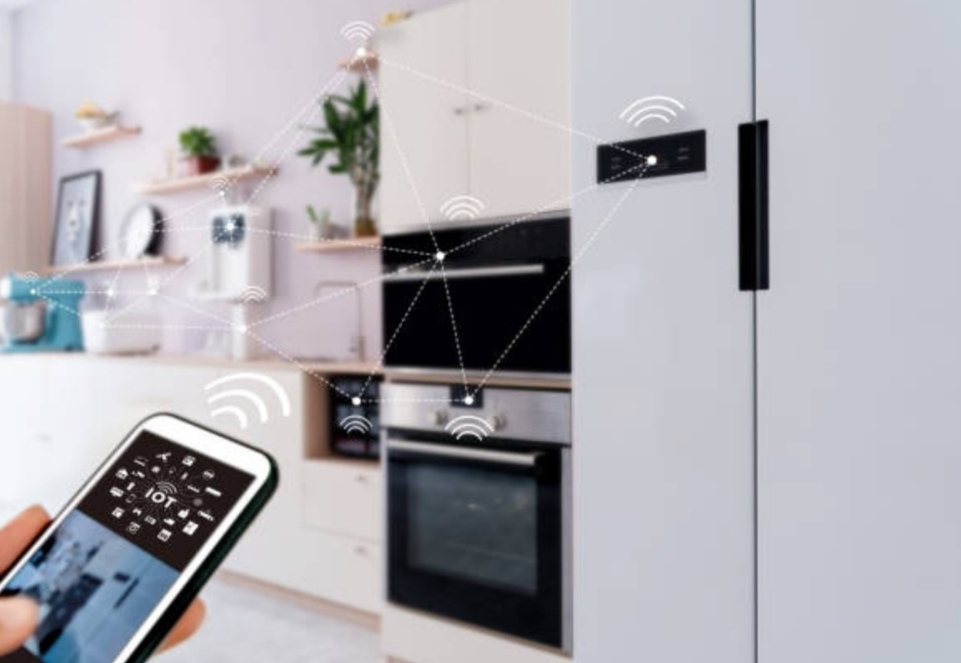
Convenience and Comfort
The primary allure of IoT in homes is the unparalleled convenience and comfort it offers.
By automating everyday tasks, IoT saves time and effort, allowing you to focus on what truly matters.
Imagine a world where your lights adjust automatically based on the time of day, your thermostat sets itself to the perfect temperature before you arrive home, and your coffee machine brews a fresh cup as soon as your morning alarm goes off.
This seamless integration of technology into daily life simplifies routines and enhances productivity.
With IoT-enabled devices, remote control becomes a reality.
You can manage your home systems from virtually anywhere using your smartphone or tablet. Forgot to turn off the lights or adjust the thermostat before leaving?
Simply open an app and make the changes instantly.
IoT also supports voice-activated assistants like Amazon Alexa and Google Assistant, enabling hands-free operation.
Whether it’s playing your favorite playlist, setting reminders, or controlling connected devices, a simple voice command is all it takes to get things done.
Furthermore, IoT systems can learn your habits and preferences over time.
For example, smart lighting systems might notice you prefer dim lighting in the evening and automatically adjust to create a cozy ambiance.
By catering to individual needs, IoT ensures your home is not just functional but also a sanctuary tailored to your lifestyle.
Enhanced Security
IoT has transformed home security, making it smarter, more reliable, and easier to manage.
Traditional security systems often required professional installation and could be costly to maintain.
However, IoT-powered security devices are not only affordable but also user-friendly, offering advanced features that enhance peace of mind.
- Real-Time Monitoring: IoT-enabled security cameras provide live video feeds, allowing homeowners to monitor their property in real time. Whether you’re at work or on vacation, you can check in on your home through a smartphone app.
- Instant Notifications: Many IoT security systems send instant alerts in case of unusual activity, such as motion detected near your front door or a window being opened unexpectedly.
- Smart Locks: IoT smart locks eliminate the need for physical keys, offering features like keyless entry, remote locking, and temporary digital keys for guests or service providers.
- Comprehensive Surveillance: Advanced systems integrate cameras, motion detectors, and alarm systems into one cohesive network. This integration ensures all aspects of home security are covered seamlessly.
By leveraging IoT, you can deter potential intrusions and respond quickly to any security threats, making your home safer than ever before.
Energy Efficiency and Cost Savings
One of the most impactful benefits of IoT is its ability to optimize energy consumption, leading to significant cost savings and a smaller environmental footprint.
With IoT, energy usage becomes more transparent and manageable.
- Smart Thermostats: Devices like Nest Thermostat or Ecobee learn your temperature preferences and adjust heating and cooling accordingly. This not only ensures comfort but also reduces energy waste by avoiding unnecessary usage.
- Smart Lighting Systems: IoT lighting systems can automatically turn off when no one is in the room or adjust brightness based on natural light availability. This helps conserve electricity while maintaining a pleasant atmosphere.
- Energy Monitoring Tools: IoT-enabled energy monitors provide detailed insights into your household’s power consumption. By identifying energy-hungry devices, you can make informed decisions to reduce waste and lower utility bills.
- Solar Energy Integration: Homes with solar panels can benefit from IoT systems that track energy generation and optimize its usage. These systems ensure you maximize savings while contributing to sustainable energy practices.
The combination of efficiency and cost-effectiveness makes IoT a game-changer for homeowners looking to save money and reduce their carbon footprint.
Improved Quality of Life
By personalizing and streamlining your living environment, IoT significantly enhances the quality of life.
Smart home devices can be tailored to individual preferences, ensuring every member of the household feels comfortable and cared for.
- Health Monitoring: IoT-enabled devices like air quality monitors ensure your home’s environment is healthy. These devices can detect pollutants, allergens, or excess humidity, alerting you to take corrective measures.
- Personalized Entertainment: IoT systems integrate seamlessly with smart TVs, sound systems, and streaming platforms, creating an immersive entertainment experience. For instance, a voice command can cue up your favorite movie, dim the lights, and adjust the sound system for a theater-like experience at home.
- Accessibility for All: IoT makes homes more inclusive for individuals with disabilities or the elderly. Features like voice-activated controls, automated door systems, and health-monitoring devices provide independence and safety.
- Stress Reduction: With IoT handling mundane tasks like turning off lights, managing schedules, or keeping track of groceries, homeowners can enjoy a more relaxed lifestyle.
By creating a harmonious balance of technology and comfort, IoT improves not just the functionality of homes but also the well-being of those who live in them.
Integrating IoT into your home is more than just a technological upgrade—it’s a lifestyle enhancement.
From unmatched convenience and enhanced security to cost savings and improved quality of life, the benefits are undeniable.
Ready to transform your home with IoT? Explore top-rated IoT devices today and unlock the full potential of smart living!
Challenges and Considerations
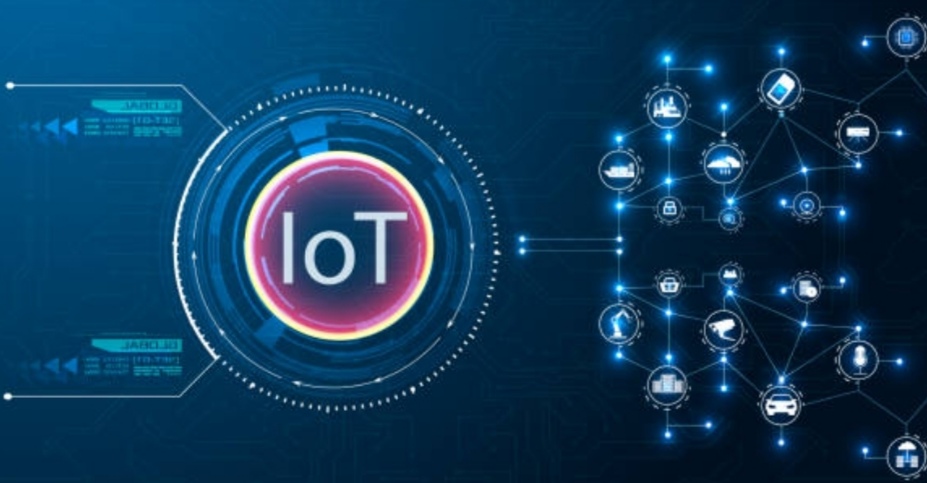
Security and Privacy Concerns
One of the most significant challenges of adopting the Internet of Things (IoT) is ensuring security and privacy.
While IoT devices enhance convenience and efficiency, they also introduce vulnerabilities that can be exploited by cybercriminals.
Understanding what is IoT means acknowledging that the interconnection of devices creates multiple entry points for potential attacks.
IoT devices, ranging from smart thermostats to security cameras, often operate on open networks or use weak default passwords.
These factors make them susceptible to hacking attempts, where attackers can gain unauthorized access to personal data, control devices, or even infiltrate entire networks.
- Data Breaches: IoT devices collect and transmit vast amounts of sensitive information, such as location data, health records, and financial details. If this data is not adequately encrypted, it could be intercepted or stolen.
- Lack of Updates: Many IoT manufacturers fail to provide regular software updates or patches, leaving devices vulnerable to newly discovered threats.
- IoT Botnets: Hackers can exploit unsecured IoT devices to create botnets, networks of compromised devices used to launch attacks like Distributed Denial of Service (DDoS).
To mitigate these risks, users should take proactive measures such as:
- Changing default passwords to strong, unique ones.
- Enabling two-factor authentication on IoT platforms.
- Ensuring devices are updated regularly with the latest firmware.
- Using a dedicated, secure network for IoT devices to isolate them from sensitive data.
Manufacturers also play a crucial role by designing devices with security in mind, incorporating encryption, and adhering to best practices for safeguarding user privacy.
Compatibility and Standardization
Another critical challenge in IoT adoption is compatibility and standardization.
With a plethora of IoT devices and platforms available, achieving seamless interoperability can be difficult.
Different brands often use proprietary protocols, making it challenging to integrate devices from various manufacturers into a single cohesive system.
For example, a smart home may include devices from different companies, such as a thermostat from Nest, lighting from Philips Hue, and security cameras from Ring.
If these devices do not adhere to the same communication standards, users may experience difficulties managing them through a single app or hub.
- Fragmentation Issues: The lack of standardized protocols can lead to fragmentation, where devices fail to work together, reducing the overall effectiveness of IoT ecosystems.
- Limited Scalability: Without compatibility, expanding an IoT setup becomes cumbersome and expensive.
- Inconsistent User Experience: Using multiple apps or platforms to control devices creates frustration and inefficiency.
To address these issues, industry organizations like the Zigbee Alliance and initiatives such as Matter are working to establish universal standards that ensure device compatibility.
Consumers should look for devices labeled as “Matter-certified” or compatible with widely-used platforms like Amazon Alexa, Google Assistant, or Apple HomeKit.
For a smoother IoT experience:
- Research devices thoroughly before purchasing to ensure compatibility.
- Invest in a central hub that supports multiple protocols, such as SmartThings Hub or Home Assistant.
- Opt for products from trusted brands that prioritize interoperability.
By focusing on standardization, IoT can fulfill its promise of creating a seamless, interconnected smart home environment.
Cost of Implementation
The cost of implementing IoT is another barrier that homeowners must consider.
While the long-term benefits of IoT—such as energy savings and enhanced security—are compelling, the initial investment can be significant.
- Device Costs: High-quality IoT devices, such as smart thermostats, cameras, and appliances, often come with a premium price tag. For example, a smart thermostat might cost $250 or more compared to a basic model.
- Installation and Setup: While many IoT devices are designed for DIY installation, some require professional setup, adding to the overall expense.
- Subscription Fees: Many IoT services, such as cloud storage for security cameras or advanced features for smart appliances, require ongoing subscription fees. These costs can add up over time.
- Upgrades and Maintenance: Keeping IoT systems up-to-date with the latest devices and software may necessitate periodic upgrades, contributing to additional expenses.
Despite these costs, the return on investment (ROI) often justifies the expense:
- Energy Savings: Smart thermostats and lighting systems can significantly reduce energy consumption, leading to lower utility bills.
- Enhanced Security: Preventing a burglary or addressing a security issue proactively can save homeowners thousands of dollars in potential losses.
- Convenience and Time Savings: Automating routine tasks allows users to focus on more important aspects of their lives, which can be invaluable.
To manage costs effectively:
- Start small by focusing on high-impact devices, such as a smart thermostat or security camera.
- Look for bundled deals or discounts on IoT products.
- Consider the total cost of ownership, including subscriptions and maintenance, before making a purchase.
By carefully planning and prioritizing, homeowners can enjoy the benefits of IoT without straining their budget.
Integrating IoT into your home comes with challenges, but they can be managed through careful planning and informed decision-making.
Whether it’s addressing security concerns, ensuring compatibility, or navigating the cost of implementation, being proactive will help you overcome these hurdles.
Ready to transform your home with IoT? Explore affordable IoT solutions today and take the first step toward smarter living!
Future Trends in Home IoT
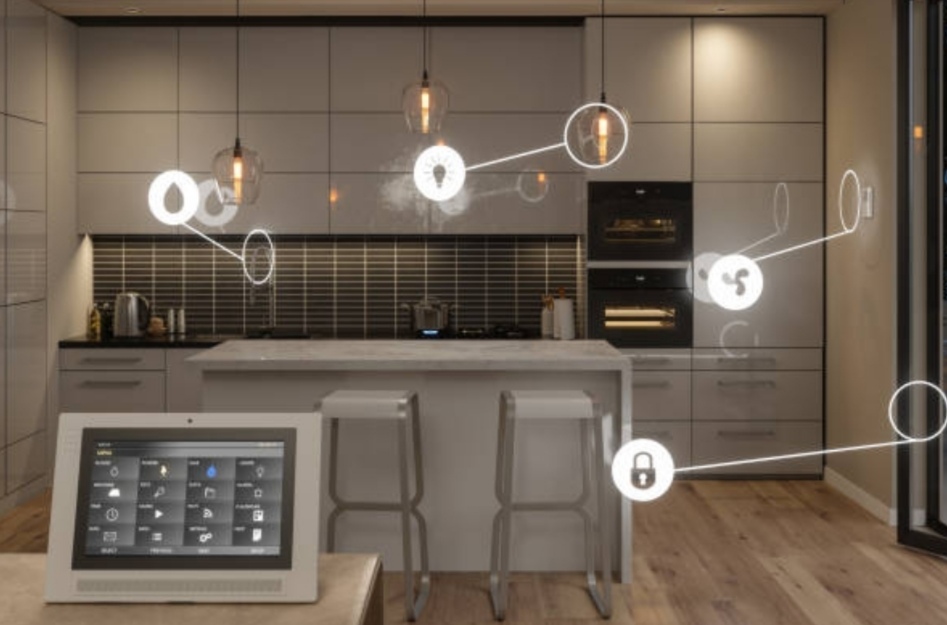
Integration with Artificial Intelligence (AI)
The synergy between Artificial Intelligence (AI) and the Internet of Things (IoT) is reshaping the future of smart homes.
AI empowers IoT devices with advanced capabilities, making home automation systems more intelligent and intuitive than ever before.
If you’re exploring what is IoT and how it evolves, understanding the role of AI is essential.
AI-driven IoT systems can analyze massive amounts of data in real-time, offering personalized solutions and predictive capabilities.
For instance, AI can enable predictive maintenance, where smart home devices monitor their own performance and predict potential failures.
This ensures that issues like a failing HVAC system are addressed before they disrupt your comfort.
- Smart Assistants: AI-powered virtual assistants like Amazon Alexa and Google Assistant are becoming more proactive in anticipating user needs. For example, they can learn your daily routine and automatically adjust your smart thermostat, lights, or blinds for maximum comfort.
- Machine Learning: Advanced machine learning algorithms can optimize energy usage. For instance, a smart lighting system might adjust brightness based on the time of day and room occupancy, reducing unnecessary energy consumption.
- Context-Aware Automation: AI enables devices to make decisions based on contextual data. For example, a smart security system could differentiate between a delivery person and a potential intruder using facial recognition technology.
As AI integration in IoT evolves, the potential for enhancing convenience and efficiency in smart homes grows exponentially.
To make the most of this trend, consider investing in AI-ready IoT devices that support advanced features.
Expansion of 5G Networks
The rapid expansion of 5G networks is revolutionizing the IoT landscape, bringing faster, more reliable connectivity to smart home devices.
Traditional Wi-Fi connections often struggle to handle the bandwidth demands of multiple IoT devices, leading to lag and interruptions.
With 5G, these issues become a thing of the past.
Why is 5G important for IoT?
- Faster Speeds: 5G offers data transfer speeds up to 100 times faster than 4G, ensuring real-time communication between devices. For instance, a smart doorbell can instantly stream HD video to your smartphone without buffering.
- Lower Latency: With reduced latency, 5G ensures quicker responses from IoT devices. This is particularly beneficial for security systems, where a delayed alert can compromise safety.
- Greater Device Capacity: 5G networks can support a larger number of connected devices simultaneously, making it easier to scale up your smart home ecosystem.
With 5G, you can experience seamless automation, even in densely populated areas with high network traffic.
Imagine a future where your smart refrigerator not only reminds you to buy groceries but also orders them for you in real-time, thanks to the speed and reliability of 5G.
Tip: As 5G networks continue to roll out, look for IoT devices designed to take full advantage of this technology. This ensures your smart home setup remains future-proof and efficient.
Growth of Edge Computing
Edge computing is emerging as a game-changer for IoT, addressing challenges related to data processing and latency.
Unlike traditional cloud computing, where data is sent to centralized servers, edge computing processes data closer to its source—right within the IoT device or a nearby edge node.
How does edge computing benefit home IoT?
- Reduced Latency: By processing data locally, edge computing ensures faster responses. For instance, a smart security camera using edge computing can detect motion and send alerts instantly without relying on cloud servers.
- Enhanced Privacy: Since data processing happens locally, sensitive information is less likely to be exposed to external servers, reducing privacy risks. This is especially important for devices like smart locks and security cameras.
- Improved Efficiency: Edge computing reduces the amount of data transmitted to the cloud, lowering bandwidth usage and improving overall system efficiency.
For example, a smart thermostat using edge computing can analyze temperature data in real-time and make adjustments without relying on a distant server.
Similarly, voice-activated devices can process commands locally, making interactions faster and more reliable.
As the IoT ecosystem grows, edge computing will play a pivotal role in supporting advanced applications like AI-driven automation and real-time decision-making.
Consider incorporating edge-enabled IoT devices into your smart home setup for a more efficient and responsive experience.
Key Takeaways
The future of home IoT is incredibly promising, with trends like AI integration, 5G expansion, and edge computing driving innovation.
These advancements are set to make smart homes more intelligent, efficient, and user-friendly than ever before.
Ready to upgrade your home with the latest IoT trends? Explore cutting-edge IoT solutions today and unlock the full potential of smart living!
How to Get Started with IoT in Your Home
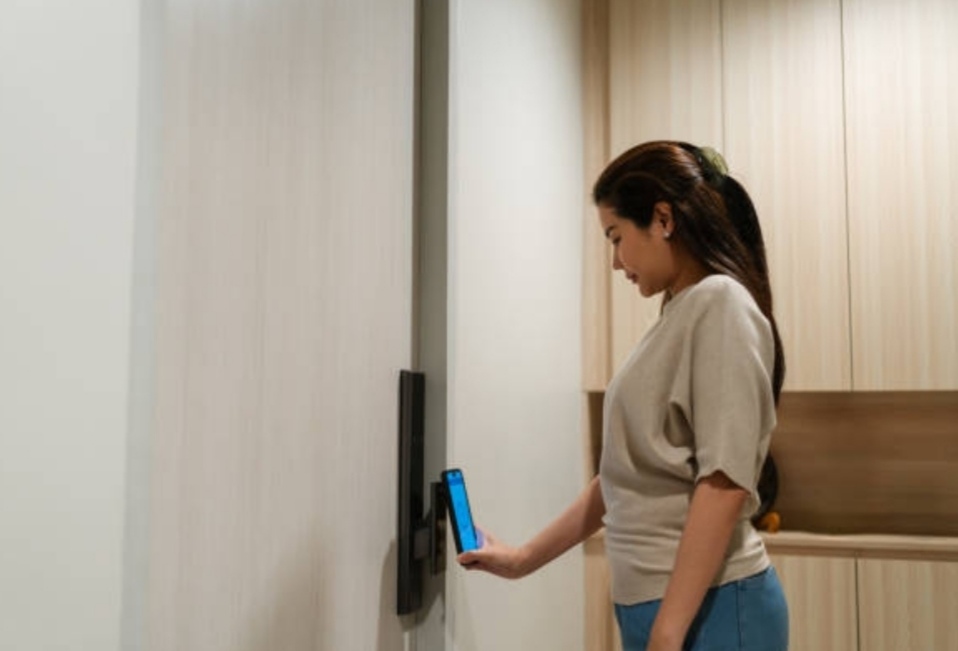
Assess Your Needs
Getting started with IoT (Internet of Things) in your home begins with understanding your specific needs and goals.
The term What is IoT might sound complex, but it simply refers to interconnected devices that communicate and automate tasks to make your life more convenient.
Start by identifying areas where IoT can genuinely add value to your daily routine. Here are some key considerations.
- Home Security: Do you need enhanced protection for your home? IoT-powered devices like smart locks, video doorbells, and motion-detecting cameras can significantly improve safety.
- Energy Management: Are you looking to reduce energy consumption? Devices like smart thermostats and energy-monitoring plugs can help you optimize usage and lower utility bills.
- Entertainment: Would you benefit from a centralized system to control your TV, speakers, and gaming devices? Smart entertainment hubs can streamline your media experience.
- Convenience: Do you want hands-free control of your lights, blinds, or kitchen appliances? Smart assistants like Amazon Alexa or Google Nest can simplify daily tasks with voice commands.
Pro Tip: List all the pain points in your current setup. For example, if you often forget to turn off the lights, a smart lighting system can be a great starting point.
Choose Compatible Devices
Selecting the right IoT devices is crucial for building a reliable and scalable smart home ecosystem.
Not all devices are created equal, and compatibility plays a significant role in ensuring seamless communication between them.
Here’s how to choose the best devices for your home:
- Opt for Devices That Use Standardized Protocols
- Look for devices supporting Zigbee, Z-Wave, or Matter, as these protocols ensure interoperability between products from different manufacturers.
- Compatibility with your chosen smart hub (e.g., Amazon Echo or Google Nest Hub) is essential for seamless integration.
- Prioritize Scalability
- Start small and gradually expand your system. For example, you can begin with a smart thermostat and later add compatible lights, locks, and cameras.
- Focus on Quality and Reviews
- Choose devices with positive reviews and reliable customer support. Pay attention to updates and warranties, as IoT devices often require long-term maintenance.
Pro Tip: Check if the device supports integration with popular platforms like IFTTT, which allows you to create custom automation workflows.
Implement Strong Security Practices
Security is a critical aspect of any IoT setup. While IoT devices offer unparalleled convenience, they can also be vulnerable to cyberattacks if not adequately protected.
Follow these steps to secure your smart home network:
- Regularly Update Firmware
- Manufacturers frequently release updates to patch security vulnerabilities. Enable automatic updates or check for updates regularly to keep your devices secure.
- Use Strong, Unique Passwords
- Avoid default passwords that come with devices, as they are easy targets for hackers. Use complex passwords or passphrases for each device, and consider a password manager for easy tracking.
- Set Up a Separate Network for IoT Devices
- Create a dedicated Wi-Fi network exclusively for your IoT devices. This isolates them from your primary network, adding an extra layer of security.
- Enable Two-Factor Authentication (2FA)
- For devices that support it, 2FA adds an additional layer of protection by requiring a secondary verification method, such as a text message or authentication app.
- Invest in a Network Security Device
- Devices like firewalls or IoT security hubs can monitor and block suspicious activity on your network.
Pro Tip: Always review privacy settings on your IoT devices and disable unnecessary features like remote access when not needed.
Key Takeaways
Getting started with IoT in your home involves thoughtful planning, smart device selection, and robust security practices.
By assessing your needs, choosing compatible devices, and implementing strong security measures, you can create a smart home ecosystem that enhances your comfort, security, and efficiency.
Ready to transform your home with IoT? Explore top-rated IoT devices today and start building your connected future!
Real-Life Examples of IoT in Homes
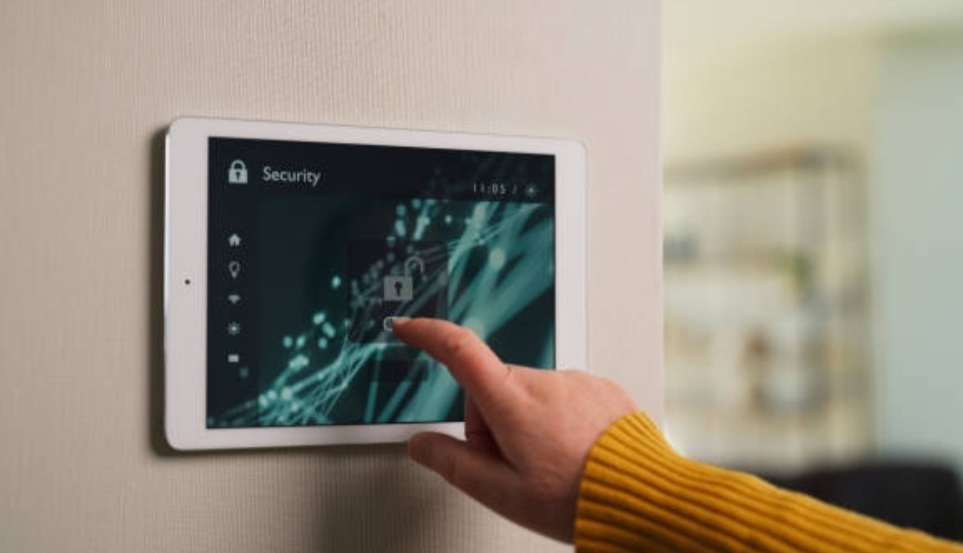
Case Study: Smart Lighting Systems
One of the most practical applications of IoT in homes is the implementation of smart lighting systems.
These systems are designed to provide optimal lighting conditions while enhancing energy efficiency and convenience. But what exactly makes them “smart”?
The answer lies in the integration of IoT technologies, which enable lights to adapt to user behavior, environmental conditions, and personal preferences.
Here’s how smart lighting works and its benefits:
- Adaptive Lighting Based on User Behavior
- IoT-enabled smart lights can detect your presence in a room using motion sensors.
- For example, if you enter your living room in the evening, the lights will automatically turn on to a warm, dim setting, perfect for relaxing. When you leave, they turn off to conserve energy.
- These systems can also integrate with voice assistants like Amazon Alexa or Google Assistant, allowing you to control lights hands-free.
- Energy Efficiency
- Smart lighting systems can significantly reduce electricity consumption.
- Using features like scheduling and dimming, you can customize lighting usage based on your daily routine. For instance, lights can gradually brighten in the morning and automatically dim at night, mimicking natural light cycles.
- Integration with solar-powered systems or energy-monitoring apps further boosts savings.
- Mood and Ambiance Control
- With smart bulbs like Philips Hue or LIFX, you can choose from millions of colors and adjust brightness levels.
- Whether you’re hosting a dinner party, watching a movie, or reading, you can set the perfect lighting with just a tap on your smartphone.
- Scalability and Future-Proofing
- These systems are scalable, allowing homeowners to add more lights or integrate with other IoT devices, such as blinds or security cameras.
Pro Tip: If you’re new to IoT, smart lighting is an excellent starting point. Products like smart plugs can even turn regular lamps into smart devices.
Case Study: Intelligent Thermostats
Another transformative IoT application in homes is the use of intelligent thermostats, which have revolutionized how we manage home heating and cooling.
These devices leverage IoT to provide real-time temperature control, learning algorithms, and energy-saving insights.
Let’s delve deeper into their features and benefits:
- Learning Algorithms for Personalization
- Unlike traditional thermostats, IoT-powered intelligent thermostats learn your preferences over time.
- For instance, devices like the Nest Learning Thermostat can detect when you’re home, understand your preferred temperatures, and adjust automatically.
- They also account for external factors like weather conditions, ensuring optimal comfort without wasting energy.
- Energy Management and Cost Savings
- Intelligent thermostats provide detailed energy usage reports, helping you understand where you can cut down on unnecessary consumption.
- Features like geofencing allow the thermostat to lower the temperature when you’re away and resume your preferred settings before you return home.
- This precise control can lead to significant savings, with studies showing that smart thermostats can reduce heating and cooling costs by up to 20%.
- Integration with Smart Home Ecosystems
- These devices can integrate seamlessly with other IoT-enabled products. For example, pairing your thermostat with smart blinds can help maintain indoor temperatures by adjusting sunlight exposure.
- Remote Control for Convenience
- With smartphone apps, you can monitor and adjust your home’s temperature from anywhere. Whether you’re returning from a vacation or want to pre-cool your home before arriving, the remote access feature ensures comfort at all times.
- Environmental Benefits
- By optimizing energy usage, intelligent thermostats contribute to reducing your carbon footprint. They align with the growing trend of sustainable living.
Pro Tip: Consider models that are compatible with renewable energy sources, such as solar panels, to further enhance their eco-friendly benefits.
Key Takeaways
These real-life examples demonstrate how IoT is reshaping home automation.
Smart lighting systems and intelligent thermostats are just the beginning of what IoT can do to make your home more efficient, comfortable, and eco-friendly.
Ready to upgrade your home? Start with easy-to-install products like smart bulbs or intelligent thermostats and unlock the full potential of IoT in your daily life!
Addressing Common Misconceptions about IoT
The rise of the Internet of Things (IoT) has brought about incredible advancements, but it has also led to certain myths and misconceptions.
Let’s break down some common misunderstandings to provide a clear picture of what IoT truly is and how it fits into everyday life.

Myth: IoT is Only for Tech-Savvy Individuals
A widespread misconception is that IoT devices are complicated and suitable only for those with advanced technical skills. However, this couldn’t be further from the truth.
- User-Friendly Interfaces for Everyone
Modern IoT devices are designed with simplicity in mind. Manufacturers prioritize intuitive user interfaces that make setup and operation seamless for people of all ages and technical abilities. For instance, smart home hubs like Amazon Echo or Google Nest provide straightforward, step-by-step instructions for installation and use.- Many devices connect effortlessly through apps that guide users via prompts and tutorials.
- Voice-controlled systems eliminate the need for manual programming, allowing users to interact naturally with their devices.
- Plug-and-Play Solutions
Today’s IoT devices often feature plug-and-play functionality. This means you can connect and start using them almost immediately without any technical know-how. For example, smart plugs can turn regular appliances into IoT-enabled devices with minimal effort.
- Community and Support
Another factor making IoT accessible is the abundance of resources, including online communities, video tutorials, and 24/7 customer support. Many manufacturers offer detailed FAQs and troubleshooting guides, ensuring users can quickly resolve issues.
- Broad Range of Applications
IoT is no longer confined to high-tech enthusiasts. It has applications in diverse areas, such as home security, health monitoring, and energy management, that appeal to a wide audience. Whether you’re automating your lights or tracking your fitness goals, IoT can fit effortlessly into your routine.
Key Takeaway:
IoT isn’t reserved for the tech-savvy. With user-friendly designs and accessible resources, anyone can benefit from its advantages.
If you’ve ever wondered, “What is IoT, and is it for me?” the answer is a resounding yes—IoT is designed for everyone.
Myth: IoT Devices are Inherently Insecure
Another common myth is that IoT devices are vulnerable to cyberattacks, making them unsafe for use.
While concerns about security are valid, advancements in technology and best practices have made IoT significantly more secure.
- Evolving Security Protocols
The IoT industry is continually improving its security measures to stay ahead of potential threats. Devices now come with advanced encryption standards, secure boot processes, and two-factor authentication to protect user data.- Encryption Standards: Data transmitted between IoT devices and servers is encrypted to prevent unauthorized access.
- Regular Firmware Updates: Manufacturers release updates to patch vulnerabilities and enhance device security. Always ensure your devices are up to date to take advantage of these improvements.
- Network Security Enhancements
- Setting up a dedicated network for IoT devices can isolate them from critical systems like personal computers. This minimizes potential damage from breaches.
- Routers now come with IoT-specific features, such as firewalls and intrusion detection, to enhance protection.
- Best Practices for Users
While manufacturers play a significant role, users must also adopt security-conscious habits:- Use strong, unique passwords for each device. Avoid default credentials like “admin123.”
- Enable multi-factor authentication wherever possible.
- Regularly monitor connected devices for unusual activity.
- Regulations and Standards
Governments and organizations worldwide are introducing IoT security standards to ensure a safer ecosystem. For instance, laws like the California IoT Security Law require manufacturers to equip devices with reasonable security features.
- IoT Security Features to Look For
When purchasing IoT devices, prioritize brands that emphasize security. Look for features like:- End-to-end encryption
- Automatic updates
- Secure pairing processes
Pro Tip: Don’t let security concerns deter you from adopting IoT. By following best practices and investing in devices with robust protections, you can enjoy the benefits of IoT with peace of mind.
Key Takeaways
Addressing misconceptions about IoT is crucial for understanding its potential.
While it’s natural to have concerns, advancements in technology and accessibility prove that IoT is for everyone.
If you’re curious about integrating IoT into your life, now is the perfect time to explore user-friendly and secure options like smart home systems or energy-saving devices.
Take the first step today and unlock the future of connected living!
The Role of IoT in Sustainable Living
In today’s world, the pressing need for sustainability has driven innovation across various industries, with the Internet of Things (IoT) playing a pivotal role.
By leveraging IoT, individuals and organizations can significantly reduce their environmental impact, promoting a greener and more sustainable future.
Let’s explore how IoT contributes to sustainable living through energy conservation and waste management.

Reducing Carbon Footprint
One of the most impactful ways IoT supports sustainable living is by reducing energy consumption, directly lowering carbon footprints.
- Smart Energy Monitoring
IoT-enabled energy monitors, such as smart meters, help households and businesses track their energy usage in real-time. These devices provide detailed insights into consumption patterns, empowering users to identify inefficiencies and make informed decisions to conserve energy.- Users can schedule high-energy tasks during off-peak hours, reducing strain on the power grid.
- Many devices provide energy-saving recommendations, such as switching to LED lights or adjusting thermostat settings.
- Automated Energy Efficiency
IoT devices like smart thermostats and smart lighting systems automatically optimize energy usage without user intervention. For instance:- Smart thermostats learn user preferences and adjust heating or cooling schedules to maintain comfort while minimizing energy waste.
- Motion-sensing lights turn off when rooms are unoccupied, cutting down unnecessary power usage.
- Integration with Renewable Energy Sources
IoT plays a critical role in managing renewable energy systems. Solar panels and wind turbines equipped with IoT sensors can monitor energy production and storage, ensuring optimal efficiency.- Users can track energy generated and consumed through connected apps.
- IoT systems enable better grid integration, ensuring surplus renewable energy is distributed effectively.
- Eco-Friendly Transportation
IoT also supports sustainable mobility by optimizing transportation systems:- Smart traffic management reduces fuel consumption and emissions by alleviating congestion.
- IoT-enabled electric vehicle (EV) charging stations provide users with real-time availability, encouraging EV adoption.
Key Insight:
By integrating IoT into daily life, individuals can not only save on energy bills but also contribute to a significant reduction in greenhouse gas emissions. This aligns perfectly with the global push towards sustainability.
Waste Management
Effective waste management is another critical area where IoT is driving innovation and sustainability. Smart solutions streamline waste collection, reduce landfill contributions, and promote recycling.
- Smart Waste Bins
IoT-enabled waste bins equipped with sensors monitor fill levels and send real-time alerts to waste management services. This prevents unnecessary collection trips and ensures timely waste disposal.- Cities like Amsterdam and Singapore have adopted smart waste bins to optimize waste collection routes, saving fuel and reducing carbon emissions.
- These bins can also sort recyclable materials automatically, improving recycling rates.
- Data-Driven Insights
IoT platforms aggregate waste data to identify patterns and areas for improvement:- Municipalities can use this data to deploy additional bins in high-traffic areas.
- Insights help design targeted waste reduction campaigns, educating communities on sustainable practices.
- Recycling Initiatives
IoT encourages recycling by introducing innovative systems, such as:- Reverse vending machines that reward users for recycling plastic bottles or cans.
- Smart recycling bins that guide users on proper waste segregation using visual and audio cues.
- Reducing Food Waste
IoT solutions like smart refrigerators monitor food inventory and expiration dates, helping households reduce waste.- Connected apps suggest recipes based on available ingredients.
- Users receive alerts to consume perishables before they spoil.
- Industrial Waste Management
On a larger scale, industries leverage IoT to monitor and reduce waste:- Sensors track emissions and waste discharge to ensure compliance with environmental regulations.
- IoT systems identify process inefficiencies, enabling waste reduction at the source.
Pro Tip: Consider integrating IoT waste management solutions like smart waste bins or smart recycling systems in your home or community to actively contribute to a cleaner planet.
Key Takeaways
IoT’s role in sustainable living goes beyond convenience—it’s about creating a future where technology works in harmony with the environment.
By adopting IoT devices for energy conservation and waste management, individuals and communities can significantly reduce their ecological footprint.
Ready to make a difference?
Start by exploring IoT solutions like energy-efficient devices and smart waste systems today.
Together, we can embrace sustainability and shape a better tomorrow!
Conclusion of IoT
Embracing the Internet of Things (IoT) in your home is no longer a futuristic concept; it’s a practical step toward simplifying daily life, improving efficiency, and enhancing security.
By understanding what IoT is, its applications, and how to address potential challenges, you can confidently transform your home into a smart haven tailored to your needs.
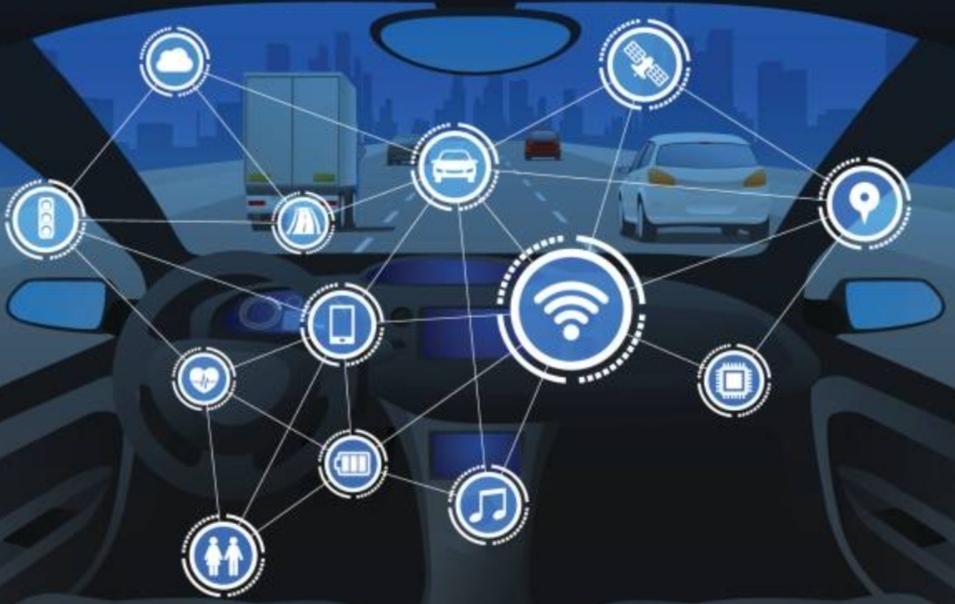
Convenience Meets Innovation
The IoT revolution is fundamentally about making life easier. Imagine walking into your home, where the thermostat has already adjusted to your preferred temperature, the lights turn on as you enter, and your coffee maker starts brewing at your usual time.
These conveniences, powered by IoT, save you time and effort every single day.
- Time-Saving Automation
IoT devices eliminate repetitive tasks. With automation, you no longer need to manually turn off lights, adjust the thermostat, or even restock your fridge—smart refrigerators can do it for you.
- Centralized Control
Smart hubs or apps consolidate all your IoT devices, allowing you to control your home environment from a single interface. Whether you’re managing home security systems or adjusting your home lighting, everything is at your fingertips.
Enhanced Security and Peace of Mind
Security is a top concern for many homeowners, and IoT has revolutionized how we protect our homes.
Smart security systems provide real-time monitoring, alerts, and even video surveillance.
- Real-Time Alerts
IoT-enabled cameras and sensors send instant notifications to your smartphone if suspicious activity is detected. This means you can act immediately, no matter where you are.
- Advanced Features
Modern smart locks allow you to control access to your home remotely. You can even create temporary access codes for visitors or delivery personnel and monitor usage history to enhance security.
- Peace of Mind
Knowing your home is protected, even when you’re miles away, brings unparalleled peace of mind. Whether you’re on vacation or at work, IoT ensures that your home is always under watchful eyes.
Sustainability and Cost Efficiency
Adopting IoT devices doesn’t just enhance your quality of life; it also reduces energy consumption, lowering both your environmental impact and utility bills.
- Energy Monitoring
IoT devices like smart thermostats and energy monitors analyze your consumption habits, offering actionable insights to reduce waste.
- Eco-Friendly Living
From reducing unnecessary lighting to optimizing appliance usage, IoT encourages environmentally conscious behavior, helping you live more sustainably without sacrificing comfort.
Overcoming Challenges for a Seamless Experience
While the benefits of IoT are undeniable, it’s essential to approach implementation thoughtfully.
- Data Security Awareness
Ensure your devices are updated with the latest security patches and use robust passwords to protect your network.
- Device Compatibility
Before investing in IoT devices, ensure they’re compatible with your existing systems or platforms to avoid integration issues.
- Educate Yourself
Understanding the basics of what IoT is and how it functions will empower you to make informed decisions and maximize the benefits of this technology.
The Future of Smart Living
As IoT technology continues to evolve, the possibilities for creating a smarter, more efficient home are virtually limitless.
With advancements in AI, machine learning, and device interconnectivity, IoT is poised to redefine home automation in the years to come.
By taking proactive steps today, such as investing in energy-efficient devices, prioritizing security, and embracing smart home solutions, you position yourself at the forefront of this technological transformation.
If you’re ready to revolutionize your living space, start exploring affordable IoT devices that cater to your needs.
Take the first step toward a smarter, greener, and more secure home today!
Boldly step into the future and transform your home with IoT. Whether you’re looking for convenience, security, or sustainability, the power of IoT is within your reach.
Don’t wait—begin your journey toward smart living now!
You might also like :

